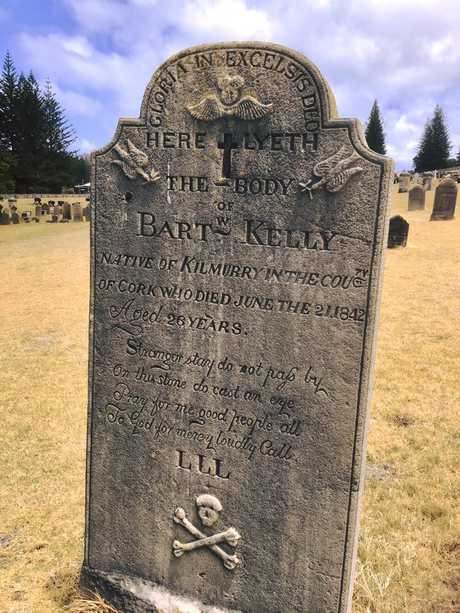Perri Cutten: A Timeless Legacy in Fashion
Remembering Perri Cutten: A trailblazing Australian fashion designer whose timeless elegance and...

 Search...
Search...
In early September of 1842, news had leaked from the penal colony on Norfolk Island via the government brig Governor Phillip when it landed in Sydney, of a very daring attempt by prisoners to escape their isolated prison. The event turned out in the worst way. Newspapers across the colonies were quick to publish all the details.
It was early morning, 7am to be precise, on June 21 and the brig, the Governor Phillip was anchored a mile from the Cascades, on the leeward side of Norfolk Island. Around 14 prisoners had stayed on board for the night after helping unload its cargo brought up from Sydney. At the time mentioned, the prisoners were brought up on deck to continue their work. There were only two armed soldiers, a sergeant and the seamen on deck, with the other 10 soldiers, along with the captain, down below.
The prisoners saw their advantage and took it, rushing the two soldiers and throwing them overboard. One soldier was later rescued but the other, sadly, was drowned. The sergeant reacted quickly and firing his gun, scored a hit with Bartholomew Kelly, an Irish prisoner from Kilmurry aged 26 years.
Kelly had come out from Ireland, having been charged with the theft of a cow when he was only a teenager. Some records say he was as young as 12 but was most likely 17. Tried in 1830, he came to the colonies on the vessel Jane and was transported directly to Norfolk Island. He was average height with a ruddy complexion, brown hair and grey eyes. Like many other convicts he sported a couple of tattoos. One was a crucifix on his right forearm and the other, a mysterious dot, as if testing the tattoo utensil before drawing the main picture, between his left thumb and forefingers.
On this day Bartholomew was to die, branded a pirate having only been two days with the crew of prisoners attempting to take the boat.

The sergeant was knocked down and severely wounded after shooting Kelly. By this stage the prisoners were taking charge, ordering all of the ordinary seamen, except two, to board the launch that was tied to the brig. One of the remaining seamen was to stay at the wheel with the prisoner named Moss to keep the ship on course.
Captain Boyle and his men had heard the screams and shouts from above and had rushed to the hatches only to find them battened down. They were trapped. While the prisoners were now in complete charge of the ship, they were only armed with the pistols and cutlasses taken from the two sentries.
At one stage the mutineers called down to the Captain, trying to bargain with him. They said if he passed them up food, water and arms, they would willingly give over the brig and take the launch to go on their own way. Captain Boyle was no fool. He knew at some point the vessel would come back into his hands. Without food and water the prisoners would be exposed, and the crew and military, who were well armed, were just waiting to find a point of weakness and get back up on deck.
The cabin skylight caught the Captain's eye, and without the prisoners becoming aware, he broke the glass. From his vantage point he could see the man who was in charge of the wheel. The Captain aimed and waited, then shot. The victim was instantly killed. Mayhem ensued and in the midst of it, someone managed to open the hatch. The Captain and the military pored out from below firing at the mutineers. They killed three and mortally wounded two. The ship had been wrested out of the hands of the mutineers and back to authority.
It was only Captain Boyle's intervention that all mutineers didn't lose their lives that day.
Originally published on Tales From The Grave Uncovering family history from down under By Samantha Elley
References